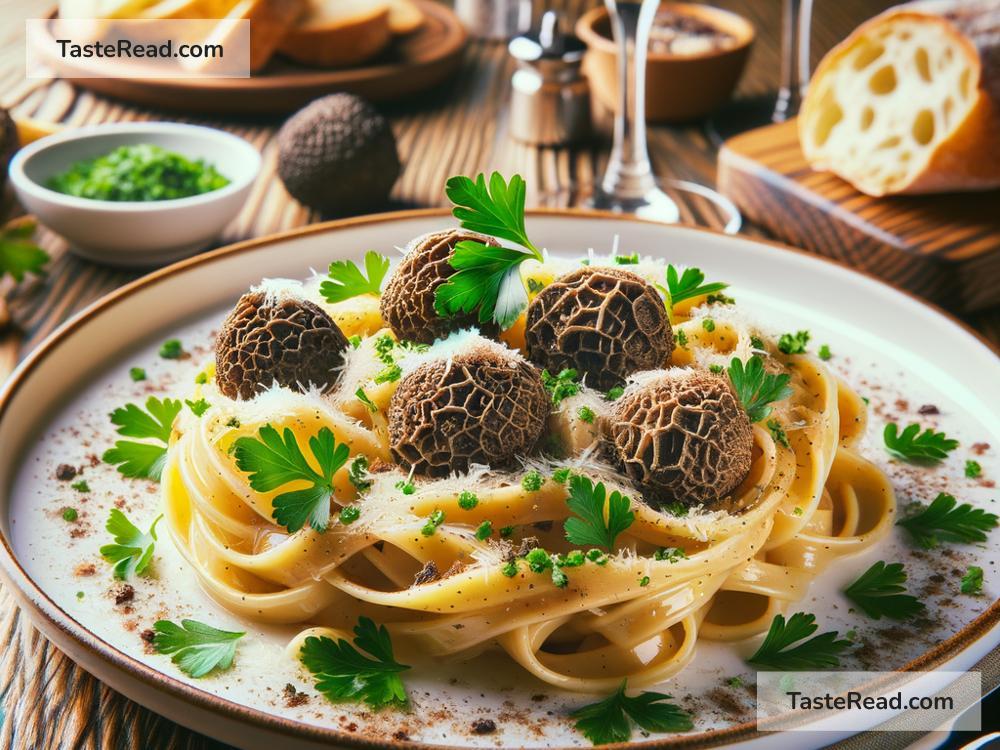Exploring Epicurean Infusions of Truffle Oil in Modern Italian Dishes
Italian cuisine is loved around the world for its vibrant flavors, fresh ingredients, and comforting dishes. From creamy pastas to crispy pizzas, Italian food offers something for everyone. But did you know that a simple drizzle of truffle oil can take these familiar dishes to a whole new gourmet level? Truffle oil is often called “liquid gold” for its ability to enhance flavors and add a luxurious touch to meals. In this blog, we’ll explore how modern Italian dishes are infused with truffle oil to create unforgettable dining experiences, all explained in straightforward language.
What is Truffle Oil?
Before diving into recipes, let’s understand what truffle oil is. Truffle oil is a specialty oil that is infused with the essence of truffles, a rare and highly prized fungus found underground. Truffles grow primarily in Italy, France, and parts of Eastern Europe, and they are famous for their earthy, nutty, and slightly garlicky flavor. However, truffles are expensive and difficult to find, which is why truffle oil has become an excellent alternative for providing that unique taste at a more affordable price.
Why Use Truffle Oil?
Truffle oil is valued for its ability to enhance dishes without overwhelming them. Unlike heavier ingredients, truffle oil acts as a subtle flavor booster. It pairs beautifully with classic Italian foods like pasta, risotto, pizza, and even salads. Just a few drops of truffle oil can turn a simple dish into a restaurant-quality masterpiece. Additionally, truffle oil allows home cooks to add a touch of elegance to their meals without needing advanced culinary skills.
Common Types of Truffle Oil
There are two main types of truffle oil:
- Black Truffle Oil: Known for its earthy and musky flavors, black truffle oil is perfect for rich dishes like risottos and creamy pastas.
- White Truffle Oil: This variety is sweeter and more delicate, with hints of garlic and shallots. It works well with lighter dishes like salads, vegetables, and seafood.
Understanding the difference between these two helps you decide which oil to use for specific recipes.
Truffle Oil in Modern Italian Dishes
Italian chefs have been creatively incorporating truffle oil into both traditional recipes and modern interpretations. Here are a few ways truffle oil is used:
1. Luxurious Truffle Risotto
Risotto, with its creamy texture and rich flavors, is already a beloved Italian dish. Adding truffle oil elevates it to gourmet status. Chefs mix it into the cooked risotto right before serving, allowing its aroma to blend with the creaminess of the dish. For an added touch, shaved Parmesan and mushrooms are often included, pairing perfectly with the earthy flavors of truffle oil.
2. Truffle Pizza
Pizza is an Italian classic, but modern pizza variations now feature truffle oil as a star ingredient. Rather than the usual tomato sauce, chefs drizzle truffle oil over a thin crust pizza topped with mozzarella cheese, mushrooms, and arugula. The slight drizzle adds sophistication and complements the freshness of the toppings. White truffle oil is commonly used for its lighter flavor profile.
3. Truffle Pasta
Pasta, one of Italy’s greatest gifts to the culinary world, becomes even more magical with truffle oil. Whether it’s a creamy Alfredo sauce or simple olive oil and garlic, truffle oil complements a variety of pasta dishes. A popular combination is tagliatelle served with black truffle oil, grated Parmesan, and sautéed mushrooms. It’s simple to make yet feels luxurious.
4. Truffle Focaccia
Focaccia, a popular Italian bread, is often infused with herbs like rosemary. Modern recipes now weave truffle oil into the dough or brush it on top after baking. This infusion gives the bread an aromatic boost and a gourmet appeal. Pairing truffle focaccia with olive oil for dipping creates a wonderful appetizer.
5. Truffle Oil Over Italian Salads
Truffle oil isn’t just for hot dishes—it can transform salads too. A light drizzle over an Italian-inspired salad of mixed greens, cherry tomatoes, Parmesan shavings, and balsamic vinegar adds depth to the flavors. For white truffle oil, think about pairing it with seafood-based salads like octopus or shrimp.
Tips for Using Truffle Oil
Using truffle oil requires a delicate touch. Here are a few simple tips:
- Use It Sparingly: Truffle oil is intensely flavored, so a little goes a long way. Start with just a few drops and add more as needed.
- Add It At the End: Truffle oil loses some of its aroma and flavor when cooked, so it’s best added just before serving.
- Pair It Wisely: Truffle oil pairs well with earthy and creamy foods but can clash with overly acidic or spicy flavors.
- Buy Quality Oil: Not all truffle oils are created equal. Look for brands that use natural truffle extracts rather than synthetic flavors.
Truffle Oil’s Growing Popularity
Truffle oil has moved from high-end restaurants to home kitchens, allowing anyone to experience gourmet dining without breaking the bank. Its use in modern Italian dishes highlights how traditional recipes can evolve while staying true to their roots. Whether you’re cooking a special dinner or treating yourself, adding truffle oil to your meal is an easy way to bring elegance to the table.
Conclusion
Truffle oil has transformed the way people approach Italian cooking, blending tradition with modern flair. By embracing this ingredient, you can make familiar dishes feel luxurious and flavorful. From risotto to pizza to pasta, the possibilities are endless. So why not grab a bottle of truffle oil and explore the magic for yourself? It’s time to take your home cooking to the next level! Buon appetito!


